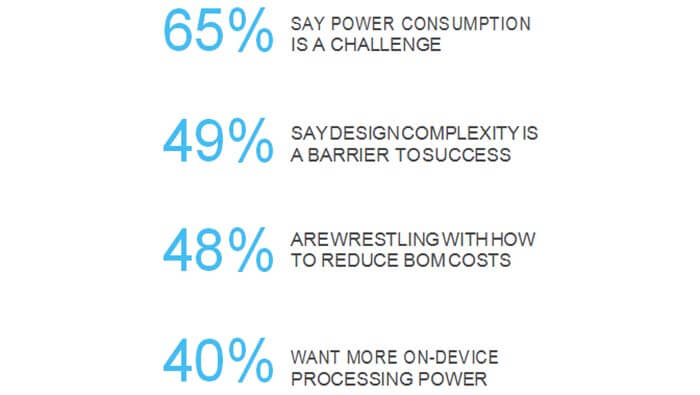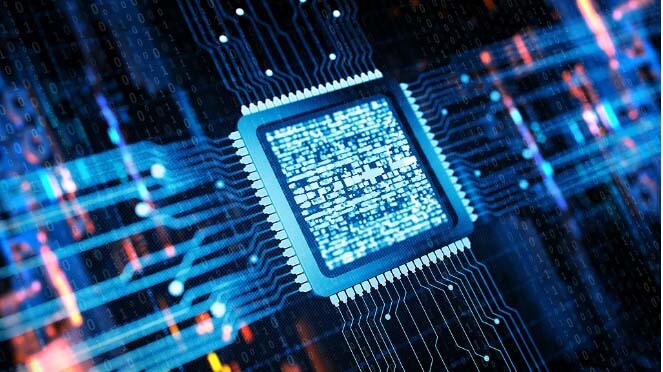Today, we talk about how will AIoT define our future? How will AIoT change everything?
Few technology pairings are as exciting or important as artificial intelligence and the Internet of Things. According to statistics from relevant organizations, in our daily lives, there are already more than 10 billion Internet of Things (IoT) devices around us.
The introduction of 5G will further accelerate this extraordinary growth trend. By 2025, there will be more than 64 billion IoT devices in use worldwide.
With the development of the Internet of Things, artificial intelligence has become the next technological phenomenon.
Describing artificial intelligence as a changer of social game rules may completely change the relationship between our lives and technology. Of course, it is only a matter of time before these technologies are brought together to form artificial intelligence or AIoT.
Although the Internet of Things connects devices to the Internet, artificial intelligence provides them with a brain and therefore the ability to act independently. Together they will change the world as we know it.
Obviously, AIoT has huge potential, but so far many people seem to have not seen the huge commercial potential. There is a lot of discussion about electronics manufacturers and emerging markets in the broader technology sector, but in most cases, AIoT is still a concept rather than a reality.
In order to understand this divergence in-depth, this article explores the views on AIoT technology, market barriers, future product design, business priorities, etc.
These electronic engineers come from many industries such as consumer technology, automobiles, manufacturing, smart cities, smart homes, health care, and retail. From their mouths, we can get a glimpse of the future development trend of AIoT.

How will AIoT change everything?
Research shows that electronic engineers are keenly aware of the potential of AIoT. Forty percent said that AIoT will fundamentally change technology to make it better, and 44% said it is essential to improving the way humans interact with technology.
Many potential applications of AIoT have yet to be imagined, but direct opportunities can be seen in all vertical markets. Emerging features (such as face and image recognition, voice control, and presence detection) combined with device intelligence and low-power processing have brought a transformative experience, and the impact of technology on our lives has undergone earth-shaking changes.
Since all of these potentials are within reach, companies are eager to transform them into commercial success. Research shows that 82% of electronic designers believe that artificial intelligence will enable them to improve the competitive advantage of their devices, and 42% believe that it will significantly improve their competitive advantage.
Business opportunities discovered by electronic engineers
Self-driving cars: | 23% | Health care: | 25% |
Manufacturing/Industry 4.0: | 41% | Retail: | 9% |
Smart City: | 23% | Others: | 21% |
Smart Home: | 39% |
In view of this demand for AIoT, where is the product application?
SMART HOME
AIoT provides opportunities to improve security, convenience, and automation. It can completely control the home environment without distraction.
CONNECTED HEALTHCARE
Product developers can extend the monitoring functions (heart rate and breathing patterns), add advanced diagnostics and enable early medical alarms, so health professionals can monitor patients remotely.
INDUSTRY 4.0
Advanced far-field voice control provides hands-free precise operation, improving standards, speed, and safety. EDGE-AI (Edge Artificial Intelligence) will bring real-time data capture and reasoning to defect detection and target maintenance.
SMART CITIES
We will see improvements in safety, security, convenience, and efficiency. Artificial intelligence will optimize traffic flow, vehicles will perceive free parking spaces, street lights will turn on presence detection, and voice (and touch) control will help curb virus infection.
AIoT market barriers

Safety
In the study, 45% of electronic engineers believe that data security is the biggest obstacle to success-the reasons are easy to understand. As technology becomes more and more intelligent, consumers and businesses are increasingly protecting their data, worrying about loss of control, potential abuse, and cybercrime.
In AIoT, data needs to be shared across devices, which brings security risks. However, edge artificial intelligence can effectively alleviate this because data processing, reasoning and decision-making can be performed on the device instead of in the cloud, which reduces the (perceived) risk of data leakage and vulnerabilities.
Connectivity
According to research, 38% of engineers emphasized that network bandwidth limitation is a serious problem of AIoT. The proliferation of equipment and the explosive growth of data will bring challenges to processing and transmission. 32% of engineers believe that delays are affecting the development of smart devices.
In safety-critical applications, operations need to be instantaneous, so connectivity and bandwidth are not only best but also critical. Devices need to collect, organize, and process data from multiple sensors (based on the changing environment around them) to take immediate action or provide recommendations.
Vehicle sensors are a good example: when a potential collision is detected, the sensors on the car do not have enough time to detect the hazard, send the data to the cloud (assuming a connection), and wait for the return stop command. In addition, industrial machinery also needs to maintain safety and security in potentially dangerous environments.
Scalability
Although the Internet of Things relies on the cloud, 24% of electronic engineers believe that cloud computing capabilities cannot be fully expanded to allow the Internet of Things to support the various applications that AIoT will support.
In the next few years, the number of smart devices will explode, and these networked devices will send more data than ever before. This will impose unrealistic requirements on the cloud. It is not designed for the scale of AIoT at all, nor is it designed for the speed at which most reasoning and decision-making need to occur.
AIoT device barriers
Market barriers are important in themselves, but engineers also pointed out some serious equipment-level technical barriers that need to be resolved.
The trade-off between cost and power
Cost remains one of the biggest obstacles facing electronic engineers. Traditionally, the cost and power of high-end CPUs used by AI systems are too high for most endpoint IoT devices. Economically enabling AIoT will require significant improvements in the processing power and functionality of today’s low-cost microcontrollers.
AIoT Design complexity
Designing in AIoT can be an extremely complex task-design complexity is also a major obstacle. AIoT systems require many different types of calculations-signal conditioning, reasoning, and classification, communication, control, and connectivity. These are usually provided by discrete solutions with separate development environments, making system design complex and time-consuming.

65% of engineers believe that power consumption is a challenge, 49% believe that design complexity is an obstacle to success, 48% are struggling with how to reduce BOM costs, and 40% want more processing power on the device.
How to solve development obstacles?
Obviously, AIoT has the potential to improve the competitive advantage of products and change the world as we perceive it. However, as research has shown, designers are currently frustrated with the many obstacles that need to be overcome so that they can take advantage of the market opportunities provided by AIoT.
Overcoming these obstacles is a major technical challenge in itself. First, we need to reduce our dependence on the cloud. This is a huge shift in the operating model that is rapidly established with the Internet of Things.
70% of electronic engineers agree that more on-device/edge processing is needed to cope with the exponential growth of data from IoT devices and realize the transition to AIoT. But staying away from the cloud also solves some of the other obstacles to AIoT.
By shifting critical tasks to the device for processing, the security and latency issues surrounding the Internet of Things are significantly reduced in the end it frees AIoT from the limitations of cloud computing. This shift has an obvious chain reaction. We need to substantially increase the available equipment processing power.
In fact, 77% of electronic engineers expect that the equipment processing capacity requirements of future products will increase (25% said it will increase significantly). We need to provide this additional computing power without increasing the BOM cost or the power budget of inherently low-cost, low-power devices.
These may sound like contradictory requirements and may not be resolved, but the good news is on the way. Research shows that engineers who are committed to bringing AIoT products to the market need a flexible, high-performance processing core to shorten the time to market without causing problematic cost issues. Able to unlock the AIoT market through smart products that improve our daily lives.
Low-cost and high-performance IoT chips are particularly critical

First, Near-instant decision
First of all, IoT chips must have supercomputing power to handle the most challenging edge artificial intelligence operations, eliminating bandwidth limitations and latency issues.
And it must be fast, flexible, and economical, and be able to combine AI acceleration, powerful DSP, connectivity, and general-purpose computing in a single device so that it can be suitable for developers of smart products that improve our daily lives.
Second, fast and flexible deployment
IoT processors need to provide the fastest I/O at a low cost. The hardware protocol for system communication and control can be recreated in the software. This feature enables embedded system designers to create their own dedicated chips and bring differentiated solutions to the market at an unprecedented speed.
Third, data security
Chip functions include things such as secure boot, one-time programmable key storage, random number generation, and custom instructions. Device-side data processing, reasoning, and decision-making capabilities help reduce the (perceived) risk of data leakage, alleviate end users’ privacy concerns and improve the overall experience.
Fourth, instant scalability
AIoT will bring about a surge of equipment. The ability to achieve diversification quickly and economically is essential for designers. Flexible architecture and comprehensive processing capabilities provide scalability, ensure that time to market are shortened and meet the required economics, to help designers quickly enter the market through outstanding AIoT products.
The majority (82%) of electronic designers believe that incorporating artificial intelligence will increase their competitive advantage, and 40% predict that AIoT will revolutionize and enhance the field of technology.
The AIoT industry has reached a tipping point. No matter how far you want to take the AIoT concept, its success depends on its ability to promote one of the most impressive electronic engineering feats in the history of the digital age.
The majority (82%) of electronic product designers believe that artificial intelligence will increase their competitive advantage. 40% predict that artificial intelligence will fundamentally change and enhance the technology industry. The artificial intelligence industry has reached a turning point. No matter how deep you understand the concept of AIoT, it will become one of the feats to promote the process of human development.
